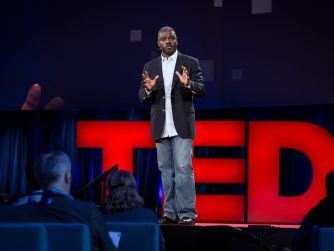
The sixth principle from the Made to Stick is also the first principle that professional communication coach, Lynn Scarborough, says was part of Jesus¢â‚¬â„¢ communication style.‚ That principle is stories.‚ Stories work because they touch people on a number of levels. They tap into the emotions. They teach, inspire, correct and change people by touching the mind and the heart.‚ Stories stimulate a person¢â‚¬â„¢s senses and help people find themselves in the lives of others.‚ Stories also create a safe place for people, a place where no one can hurt a person.[1]
Stories are the foundation of the message.‚ Interaction is what attracts people to the message. Interaction ¢â‚¬Å“is like a baited hook.‚ It attracts attention, engages, ¢â‚¬Ëœhooks¢â‚¬â„¢ and draws people into the message that is being communicated¢â‚¬¦Great interaction is like ¢â‚¬Ëœword salt¢â‚¬â„¢ because it flavors information and makes it taste more palatable and more memorable.¢â‚¬[2] Jesus used questions and props to interact and teach.
Jesus also made use of multi-track communication. Communication is not simply a matter of the mind and the will, but ¢â‚¬Å“an intrinsic convergence of everything we are.‚ It is made up of what we do, what we say, what we sing, how we feel, what we desire, what we hope and what we dream¢â‚¬.[3]‚ There are five levels of multi-track communication: physical, emotional, intellectual, intuitive and spiritual. Jesus used multi-track communication to ¢â‚¬Å“expand his communication impact and make it more memorable¢â‚¬.[4]
Jesus was also prepared.‚ Master communicators understand that preparation is the key to successful communication. But it is not simply the preparation of the message. It also includes the preparation of the person.‚ Communicating effectively requires preparation in many different areas, including physically, emotionally, intellectually, and spiritually.‚ Jesus prepared his whole life for three short years of ministry.‚ He also prepared others to lead at his departure.‚ It was his ¢â‚¬Å“preparation and discipline¢â‚¬ that ¢â‚¬Å“established the platform from which he launched history¢â‚¬â„¢s most transformational marketing campaign.¢â‚¬[5]
The fifth characteristic of Jesus¢â‚¬â„¢ communication is love. Love is the heart and soul of communication.‚ It is communication¢â‚¬â„¢s core.‚ ¢â‚¬Å“Master Communicators help us discover love because they help us discover ourselves.‚ They hold up a mirror of truth to our lives and help us to see the truth of our hearts.¢â‚¬[6]‚ Because Jesus was love, he taught, spoke, modeled and lived love and that made his communication life-giving.[7]
The final technique or characteristic of Jesus¢â‚¬â„¢ communication, according to Scarborough, is execution. She states, ¢â‚¬Å“[e]xecution is critical.‚ It requires energy, precision, commitment, and accurate focus.‚ Jesus reached his goals because he executed and hit the target whenever he communicated.‚ His examples were clear, his questions concise, and his responses precise.‚ He never let others pull him off track with their personal agendas and schedules.¢â‚¬[8]
NOTES:
[1] Lynn Wilford Scarborough, Talk Like Jesus (Beverly Hills, CA: Phoenix Books, 2007), 74-75. [2] Ibid, 95. [3] Ibid, 119. [4] Ibid, 117. [5] Ibid, 139. [6] Ibid, 164. [7] Ibid, 163. [8] Ibid, 185.





New @ Integrating Missionally: Communicating to change lives: Jesus’ communication http://bit.ly/s4jkv